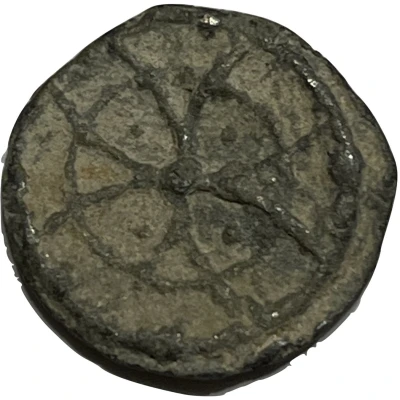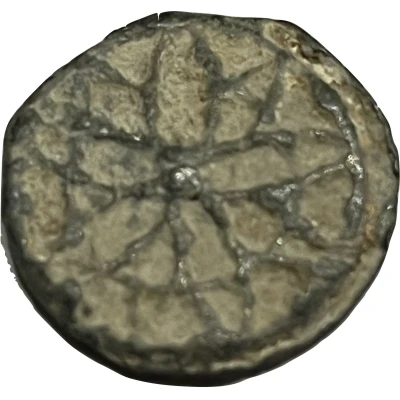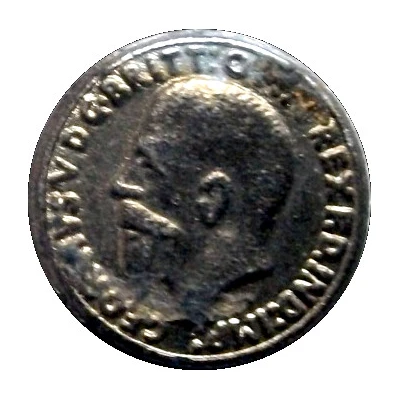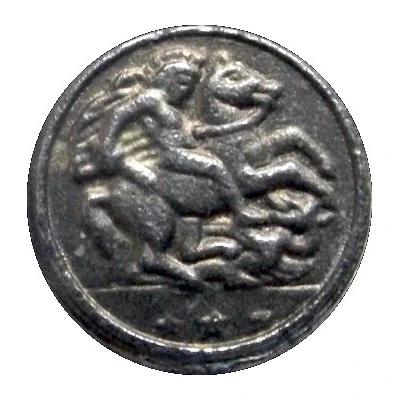Lead Token Segments, Powell Type 3 ND
| Lead | 4 g | 20 mm |
| Location | United Kingdom (United Kingdom, British Overseas Territories and Crown Dependencies) |
|---|---|
| Type | Trade tokens › Work encampment, mine and wage tokens |
| Years | 1670-1820 |
| Currency | United Kingdom - Farm and Hop Tokens |
| Composition | Lead |
| Weight | 4 g |
| Diameter | 20 mm |
| Thickness | 2 mm |
| Shape | Round (irregular) |
| Orientation | Variable alignment ↺ |
| Demonetized | Yes |
| Updated | 2024-11-14 |
| Numista | N#82192 |
|---|---|
| Rarity index | 94% |
Reverse
Blank.
Edge
Plain
Comment
http://www.mernick.org.uk/lnc/dpowell/leadtokens.htmPowell's classification:
Segments (Type 3). Includes any side consisting of three or more segments emanating from the centre, except that quartered designs:
- classify under Type 12 if they have any regular design other than crosses and pellets.
- classify under Type 14 if they are simple crosses or crosses with pellets in the centre of the quarters, i.e. pseudo-mediaeval pennies.
- remain here (Type 3) if they are cartwheel type pieces with the pellets near the perimeter, i.e. are not intended to imitate the mediaeval penny.
It is not clear what the many varieties of lead token were used for. Uses included as hop tokens; for tallying of bushels; as ferry tokens; counters; gaming counters; small change; for ecclesiastical purposes; or for other agricultural uses.
The cultivation of hops was a popular industry, first because it was very profitable, and secondly because it employed labour for almost all the year, " Planting, Soiling, Houghing, Poling, Tying and Picking."
All the picking had to be done in a few weeks, many thousands of pickers were required. These came chiefly from London, for “a holiday with work and pay," and were known as" furiners."
Payment for picking was arranged through the medium of tallies and hop-tokens. These showed the number of bushels picked, and were the basis of payment after the rate was agreed upon, which sometimes took several days.



